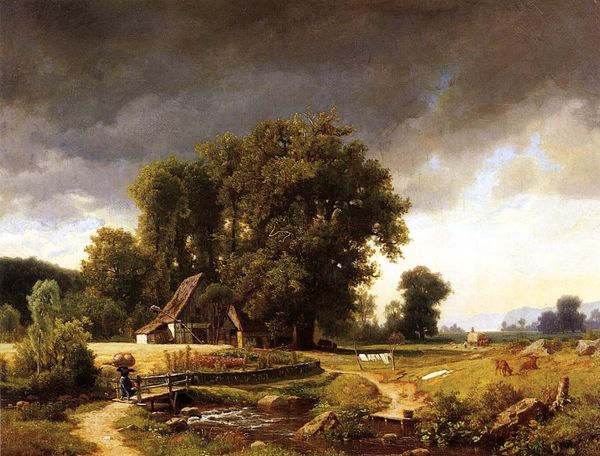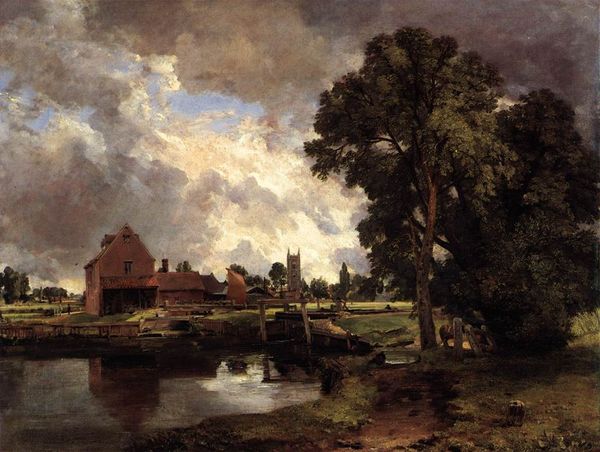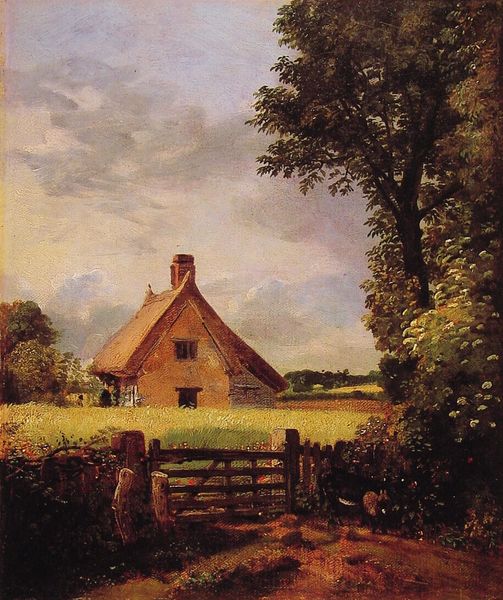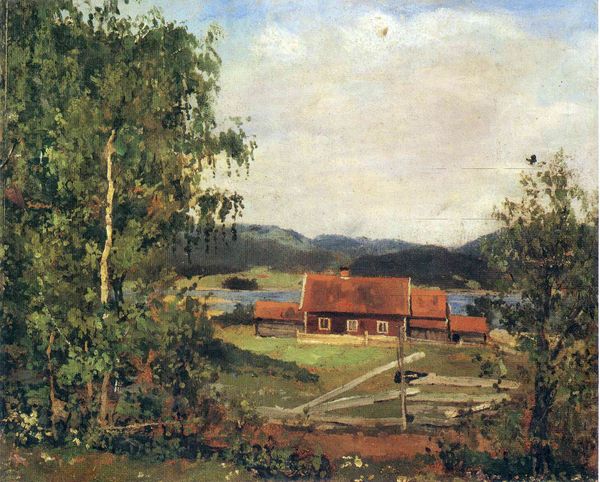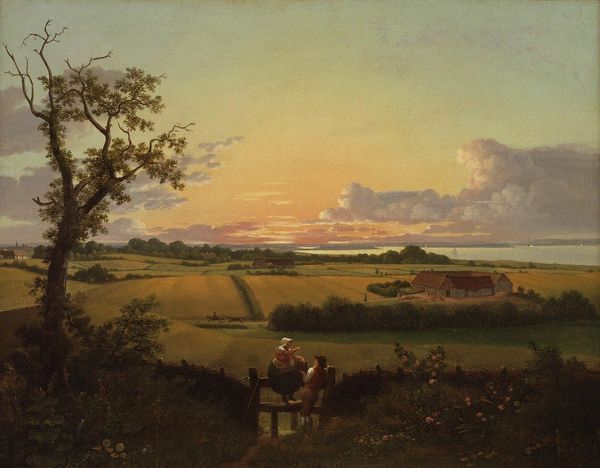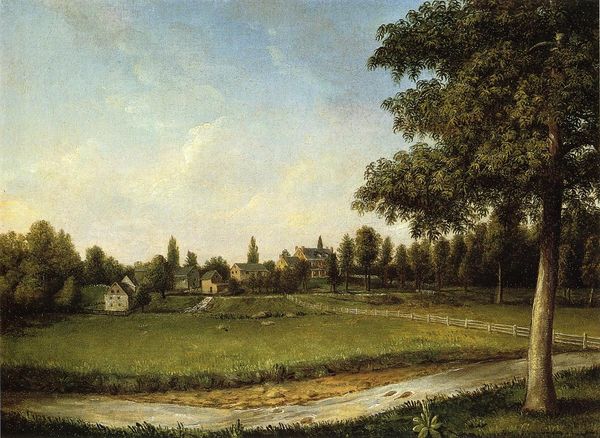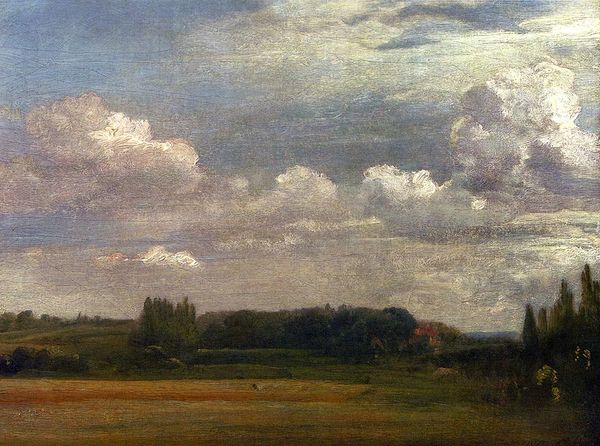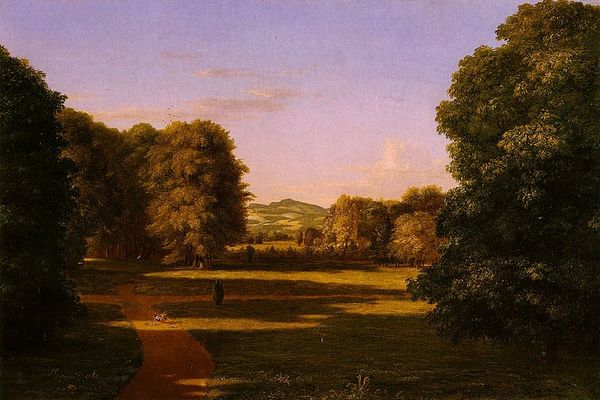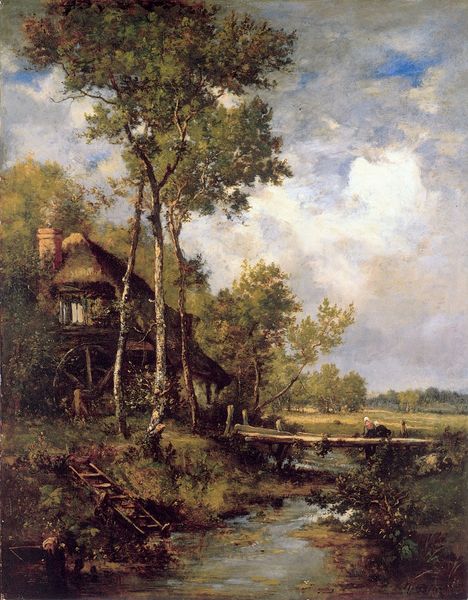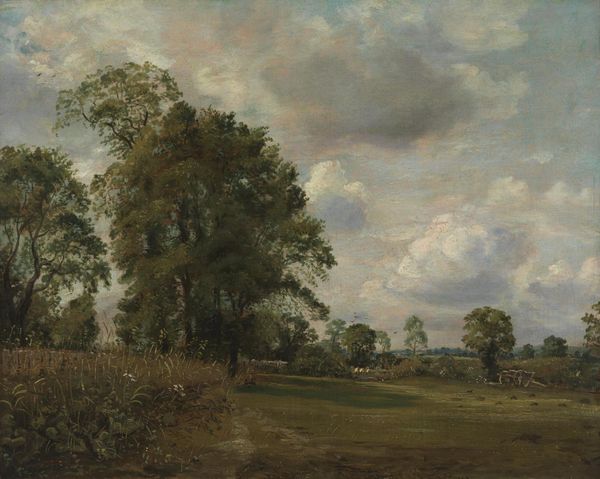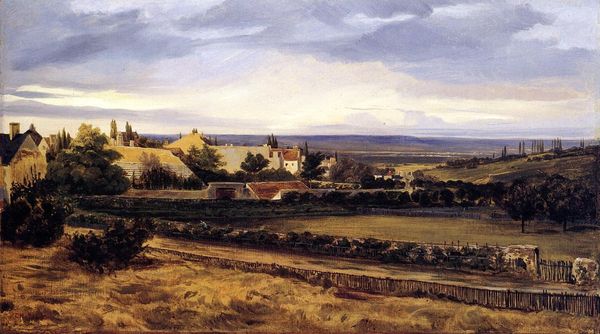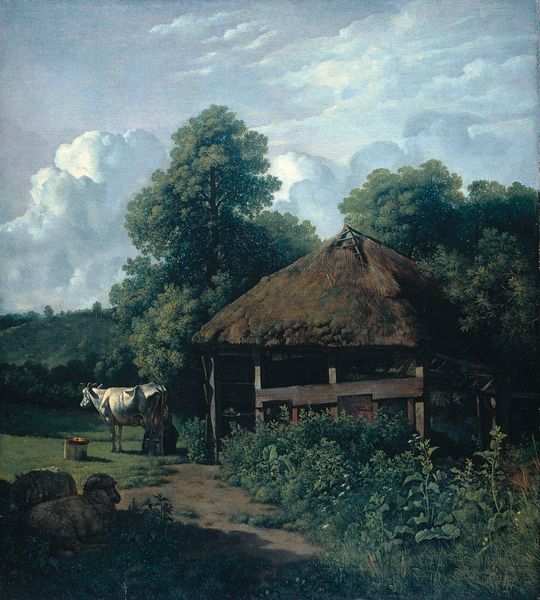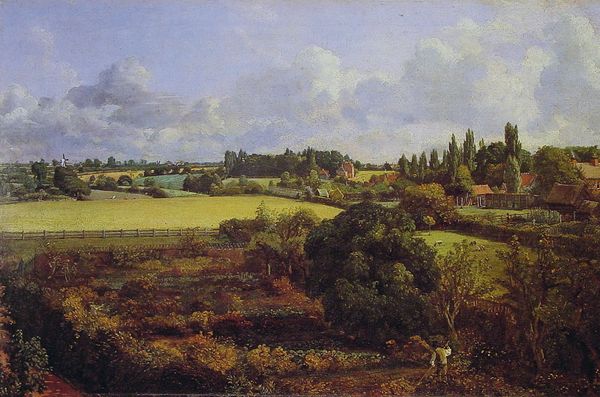
painting, plein-air, oil-paint
#
garden
#
sky
#
rural-area
#
painting
#
countryside
#
plein-air
#
oil-paint
#
landscape
#
house
#
nature
#
oil painting
#
romanticism
#
park
#
genre-painting
#
scenic spot
Dimensions: 33 x 50.8 cm
Copyright: Public domain
Curator: Let’s discuss John Constable's "Golding Constable's Flower Garden", dating back to 1815. It’s currently housed right here in the Ipswich Museum. Editor: What strikes me immediately is its tranquil, almost idyllic mood. The gentle slopes and verdant foliage seem to sigh with the stillness of the English countryside. Curator: Indeed. Notice how the composition is carefully structured. The artist uses the hedge and garden as a repoussoir, guiding the eye into the receding landscape. The colour palette emphasizes soft greens and browns with the architectural lines of the buildings and fence offsetting the organic lines of nature. Editor: But it’s not just about pictorial structure, is it? Constable’s landscapes have a strong connection to the agricultural and social realities of early 19th-century England. This "flower garden" could symbolize a carefully cultivated society, hinting at both the beauty and the constraints of rural life for the majority. The hierarchy is subtly enforced with nature in the foreground and buildings in the distance, separating and stratifying people and activities within society. Curator: A compelling observation! From a formal perspective, his impasto technique, especially visible in the clouds, injects movement and a sense of temporality into the scene, countering any sense of stasis you’ve noted. We can really get a sense of weather’s impact here. Editor: I agree. The artist uses visible brushstrokes to show us the labor involved with painting but is that related to another kind of labour: tending to the gardens, harvesting crops, and simply surviving. The working class does so much more than merely surviving within landscapes just like this. We must ask ourselves: does the tranquil surface obscure inequalities inherent in England's agrarian structure at the time? Curator: A point well taken. It enriches our appreciation of the artwork. Editor: Absolutely. Bringing both sociohistorical context and formalist considerations adds depth and relevance for modern viewers. Curator: Thank you, I am glad we agreed to bring this conversation to light.
Comments
No comments
Be the first to comment and join the conversation on the ultimate creative platform.
